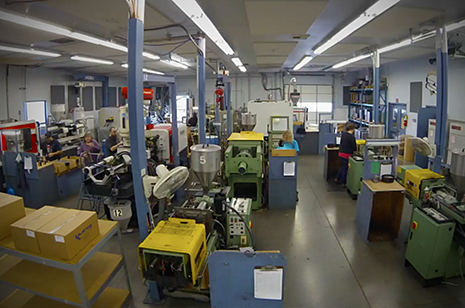- BY nwmcadmin
- POSTED IN Product Development
- WITH 0 COMMENTS
- PERMALINK
- STANDARD POST TYPE

If you’re researching CNC machining options for your next project, you’ve likely come across several different tools — namely the CNC router, CNC mill, and CNC lathe. Each of these machines plays a key role in manufacturing and prototyping, but they differ in capabilities, ideal materials, and applications.
In this article, we’ll break down the definitions, uses, and pros and cons of each method so you can better understand which tool is the right fit for your production needs.
Definitions
CNC Mill
A CNC mill (or CNC milling machine) is a computer-controlled cutting tool used to remove material from a solid block (called a “workpiece”). Using G-code generated by CAM software, CNC mills move a rotating cutter along multiple axes — typically three to five — to carve out precise features and geometries.
CNC milling is ideal for detailed, high-tolerance parts made from hard materials like stainless steel, titanium, and hardened plastics.
CNC Router
A CNC router operates similarly to a CNC mill but is best suited for softer materials like plastics, wood, and aluminum. Instead of shaping block materials, CNC routing typically works with flat sheet stock. The router uses high-speed spindles and interchangeable bits to carve or cut intricate 2D and 2.5D designs.
So what is CNC routing used for? It’s often found in signage, cabinetry, and lightweight product prototypes.
CNC Lathe
A CNC lathe is a subtractive manufacturing tool that spins the workpiece on its axis while a stationary cutting tool removes material. CNC lathes are primarily used for producing cylindrical parts, such as shafts, bushings, threads, and fittings.
These machines excel at symmetry and rotational accuracy, making them indispensable in industries like automotive, aerospace, and plumbing.
Applications for Each
Each CNC machine shines in specific applications:
- CNC Mills
- Automotive parts (camshafts, intake manifolds)
- Aerospace components (brackets, housings)
- Medical devices (implants, surgical tools)
- Tooling (injection molds, dies)
- CNC Routers
- Plastic panels and enclosures
- Furniture components and cabinetry
- Signs and displays
- Architectural models and prototypes
- CNC Lathes
- Rotating components (shafts, bushings, spindles)
- Threaded parts (fittings, fasteners)
- Round housings and symmetrical fixtures
Benefits and Disadvantages
Let’s compare the strengths and trade-offs of each machine:
| Feature | CNC Mill | CNC Router | CNC Lathe |
| Best For | High-precision, complex parts | Large, flat, or decorative parts | Round and cylindrical parts |
| Material Compatibility | Hard metals and plastics | Soft metals, plastics, wood | Metals and plastics |
| Accuracy | Extremely high (±0.001″) | Moderate (±0.005″) | High (especially in rotational symmetry) |
| Depth of Cut | Deeper and more complex cuts | Shallower cuts | Cuts along rotating axis |
| Setup Cost | High | Lower | Moderate |
| Operator Skill Level | Advanced | Moderate | Moderate |
While CNC milling offers unmatched precision and material versatility, it comes with higher costs and complexity. CNC routers are faster to set up and ideal for flat, decorative, or lightweight components. Meanwhile, CNC lathes offer speed and precision when working with round parts.
Have questions about CNC routers and mills? Call Rex Plastics
At Rex Plastics, we understand the nuances between each machining process and can help you select the right approach for your project. Whether you’re exploring CNC routing for plastic displays or precision CNC milling for detailed components, our team is here to help.
👉 Contact us today to discuss your next CNC machining project.


